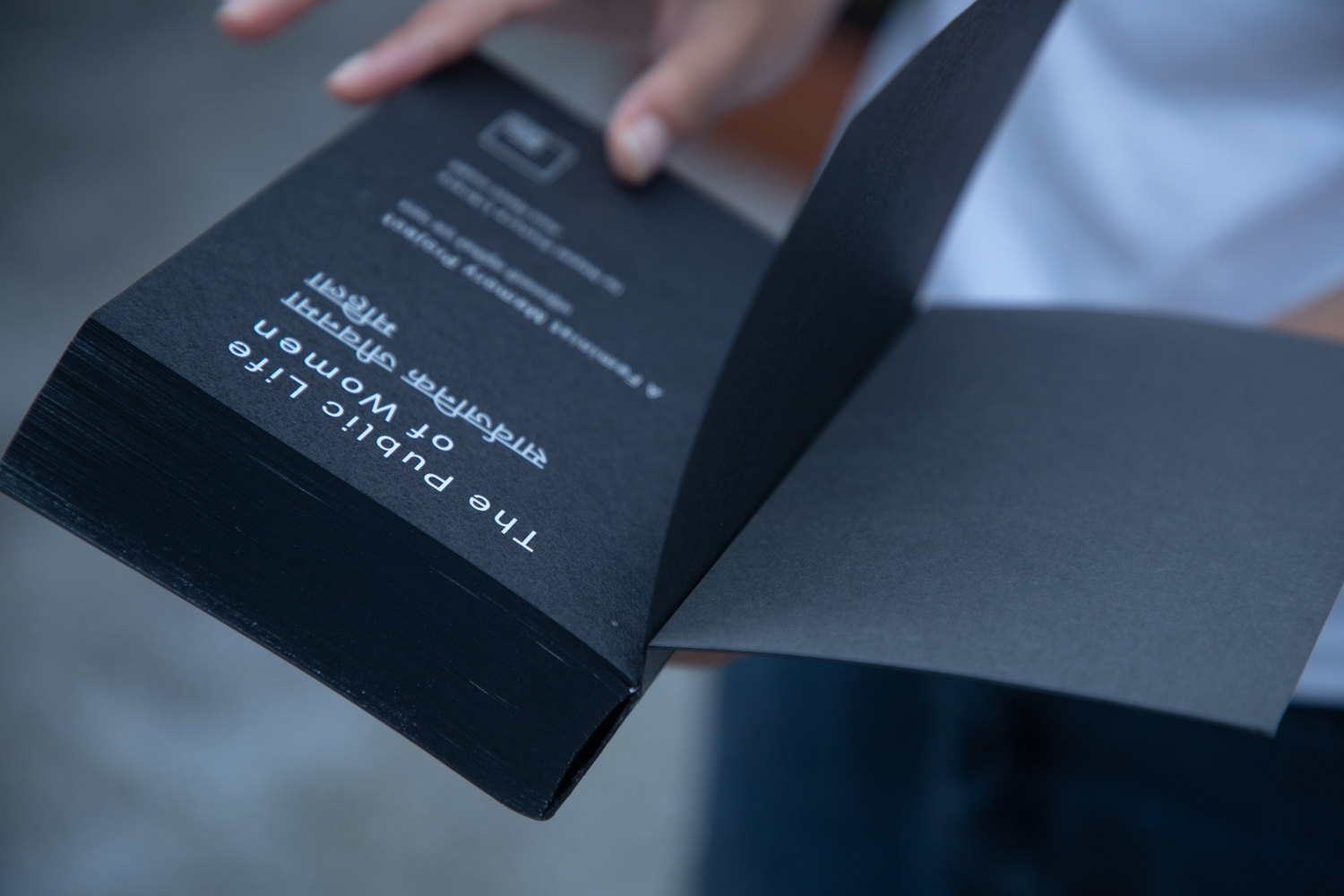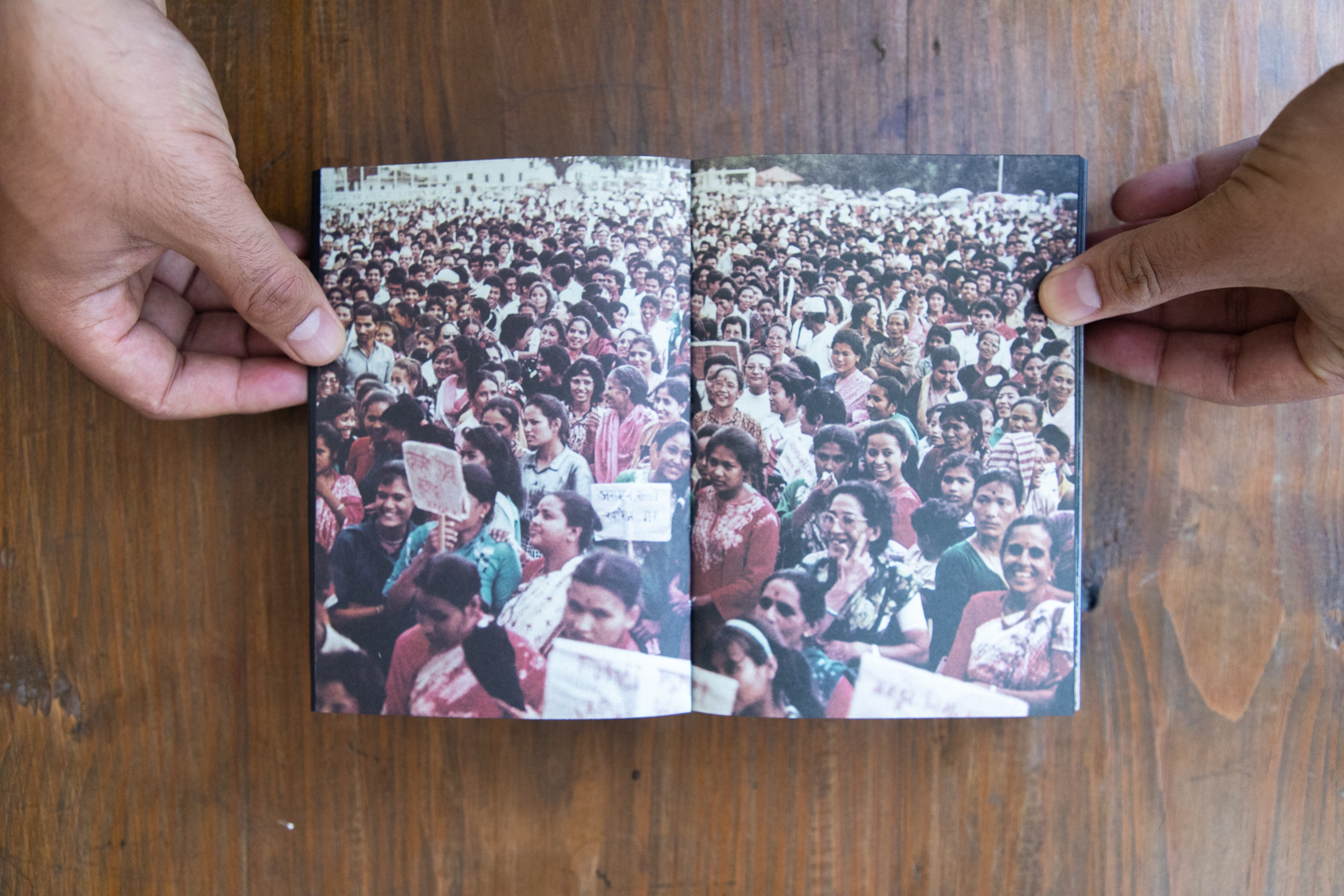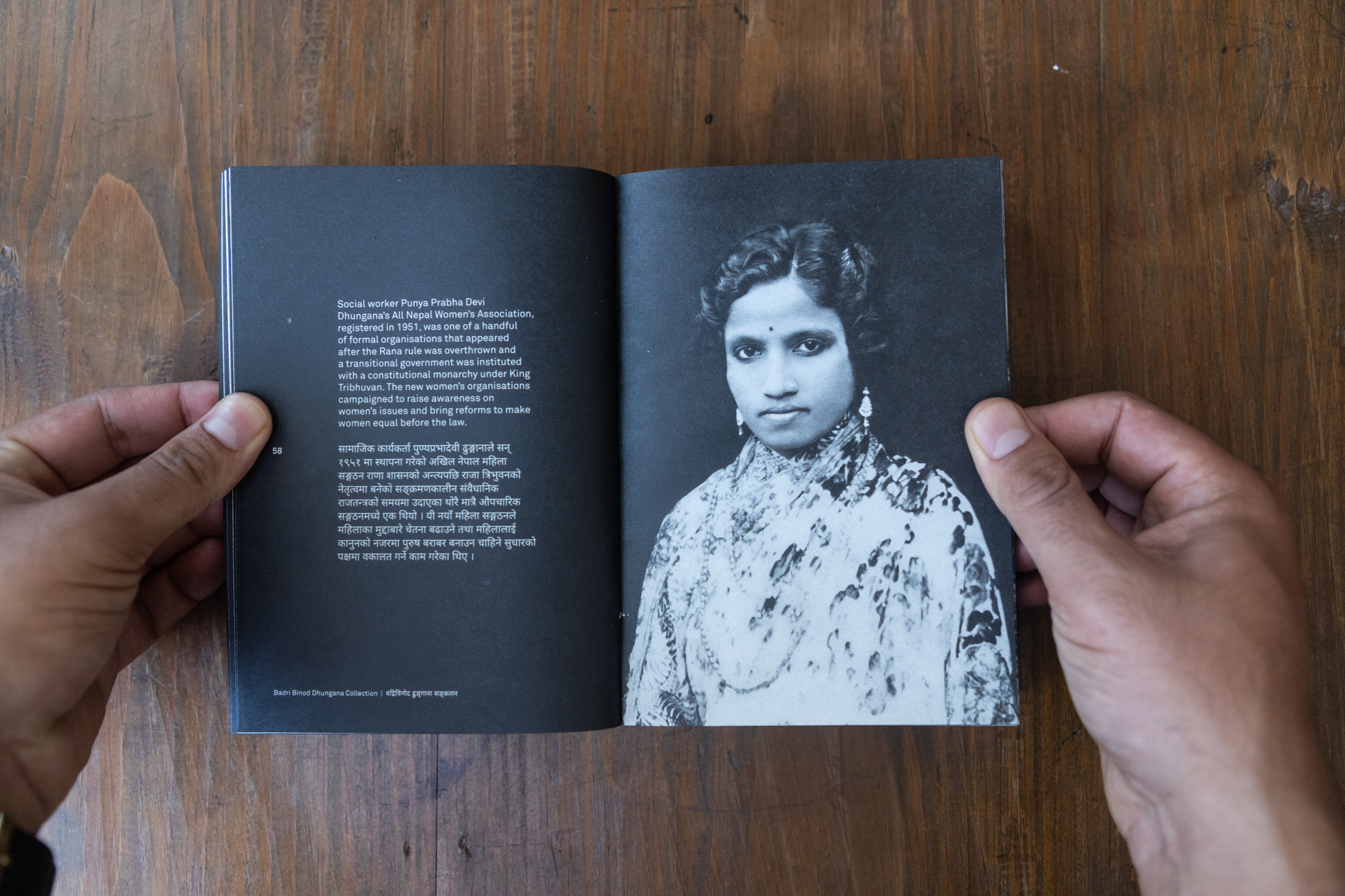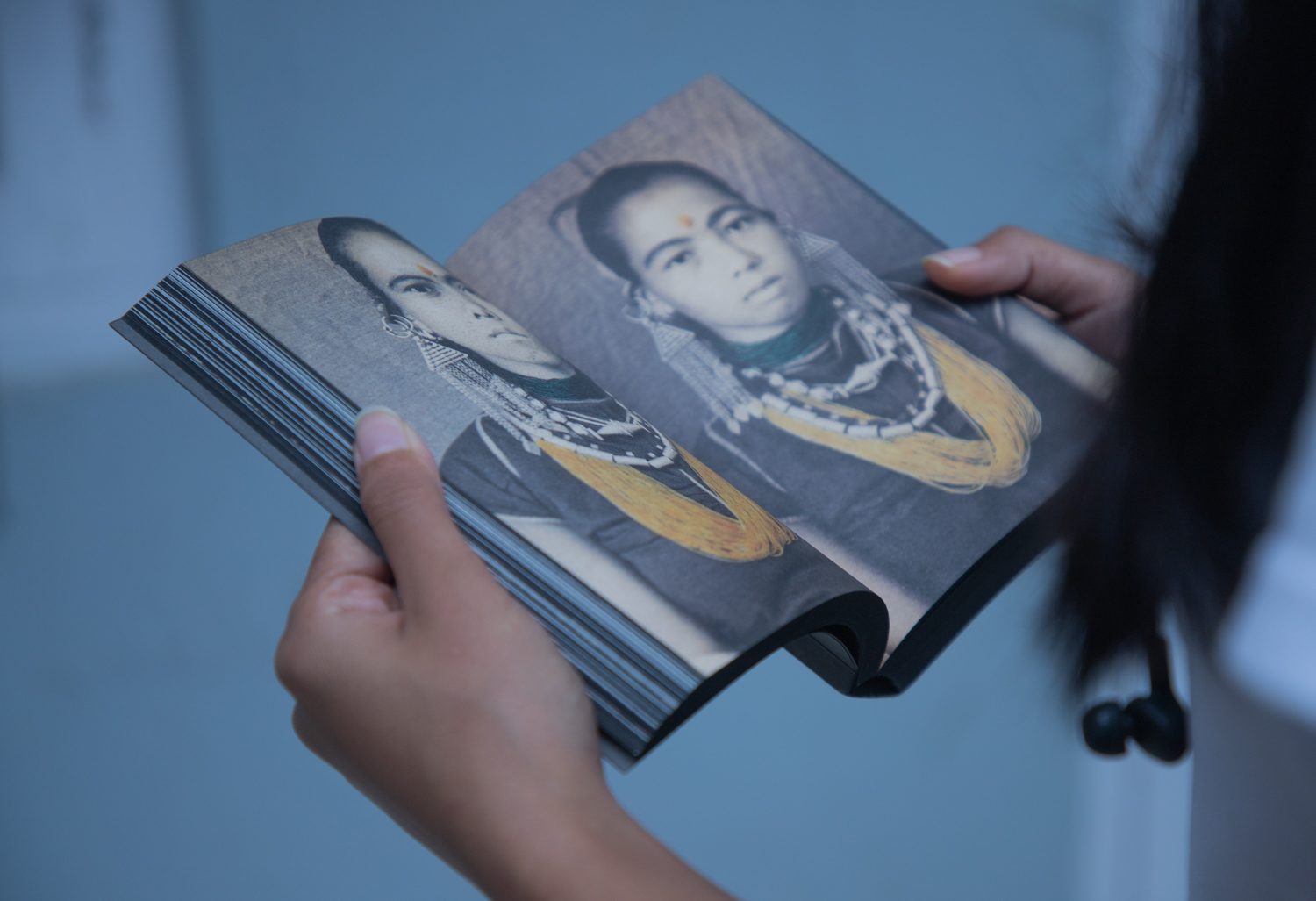
When I got the copy of The Public Life of Women, published by Nepal Picture Library as a part of the Feminist Memory Project, the first thing I noticed was how portable it is and how it fits so well in handbags carried by women.
As I observed The Public Life of Women’s presentation, I noticed a thoughtful design choice: it featured a combination of black text on a white background and white text on black pages, all with a comfortable reading experience. This design struck me as particularly user-friendly, especially keeping in mind that this book may also be read by rural women.
At this juncture of time when people are being carried away by “the end of history” thesis advocated by postmodernism, The Public Life of Women acts as a reminder of the importance of history, ideology, and political movements.
Similarly, in today’s digital world where our eyeballs are glued to screens flooded by neverending streams of digital images, this pictorial history has allowed our eyes to take a pause and to see a part of history in perspective. It has allowed our hands to turn the pages of history and our nervous system to be tickled by the fine rustling of the flipping pages.
Women in action

We are greeted by pictures of women from all walks of life gathering for an aamsabha (mass gathering) where one can not only see but feel in action, the anticipation in their excited faces. This is followed by photos taken during various political movements including anti-Rana pro-democracy movements, Jana Andolan and the People’s War, punctured in between with individual photos depicting Tharu, Arya Khas, Janajati, Dalit, and LGBT women among others.
They include urban women from Kathmandu valley as well as village women from several districts across the country. Women can be seen engaged in education, in factories, in poetry, in media, in development work, in international conferences, and in adventurous sports. This is enriched further with handwritten letters, diaries and women’s magazine covers making one so nostalgic!
Remarkably, the book offers glimpses of renowned feminists and women leaders in their candid, everyday moments. It includes a photograph of Meena Acharya dancing during her student days in Russia, Sahana Pradhan in a teasing mood with her husband Pushpalal Shrestha, and Shanta Manavi posing as a driver in a dummy car at a photo studio in Benaras.

The Public Life of Women showcases images of ordinary women captured in various impactful situations, such as Uma Devi Badi protesting the conditions of the Badi community by displaying her petticoat and bras, schoolgirls enthusiastically participating in a running competition, Madhesi women attending literacy classes, women undertaking development work in remote areas, a Kamlari woman leader addressing the Free Kamaiya Movement in Kailali, and photos of Tharu women from Dang who led a peasants’ revolt in 1980 against local landlords.
Included in The Public Life of Women are individual portraits of women from diverse age groups, in different attires, district heads of women’s class organisations, and women with graduation certificates. Seen together, they speak volumes about Nepali women’s history, their professions, and their personalities.
Several group portraits are also included that show solidarity. Some women have innocent looks, some display determination, and some carry mischievous smiles on their faces. We can notice their body language, their fashion sense, and hair and makeup trends. We see details like the watches they are wearing, their rings, their bags, and the beautiful patterns on their garments, which all produce a very intimate sense of our past.
Photos of Nani Maiya Dahal winning the election in the Panchayat era reminded me that the gutsy spirit of Nani Maiya is alive and kicking even today. The photo of lone CDO Usha Nepal riding a horse made me think of today’s women CDOs driving motorcycles and cars. Similarly, the figure of poet and writer Parijat pricked me that till today a woman of her stature has not been born again. Indeed many photos of her have been showcased in the book. I particularly felt empowered to see Parijat surrounded by an enrapt crowd of men.
The elements that stood out in these collections are those portraying women as soldiers in the People’s Liberation Army, but also as newsreaders, leaders, and members of militias meting out justice to wrongdoers. These images, along with accompanying letters and documents from the Maoist People’s War, hold particular significance as they encapsulate the militant facets of women’s contributions to the struggle.
Elements of surprises

Amongst all the photos, the photos of Rashmi Rajya Laxmi taken in the 1950s and ’60s took me by surprise. Her journey as an assistant director of Radio Nepal, and her marriage to a radical Jagat Prakash Jung Shah who was related to the Royal family is interesting to note. Her seductive photo with her husband tells us how much they were in love. The poem in memory of her late husband before she died by suicide in her bridal dress after her husband was killed in action by the Nepali army for siding with BP Koirala made me even more curious about her life.
However, The Public Life of Women seems to have overlooked including photos of women in the field of nursing, which is a predominantly women’s occupation. Similarly, while The Public Life of Women has depicted women with children in public life, the presence of pregnant women in public life is not seen, which could have been a powerful body language. I would have also liked to see photos of Chhaya Devi Parajuli representing women above 70 years boldly leading the People’s Movements in Kathmandu.
Several of my friends insisted on flipping through the book again and again looking for themselves, wondering why they or their friends were missing despite them being a part of the movement. The book has truly generated great enthusiasm among us to dig out more of the old photos and documents we have with us.
This book also reminded me of the earthquakes in 2015 in which I lost many valuable documents including important old photos that went with the collapse of my five-story building, which killed four inhabitants in my house in Bhurungkhel, Kathmandu. Had the creators of this book thought of this idea before 2015 maybe they would have saved even more valuable unique photos.
Lastly, the conversation between curators Diwas Raja Kc and NayanTara Gurung Kakshapati during the book launch was very engaging.
The discussions between them showed that they knew the subject well. The book is indeed very enticing; it made me go back again and again to revisit some of my friends I recognised in aamsabhas and also to see whether similar or even more important events have been covered in the book.
I wholeheartedly thank the Nepal Picture Library team for democratising the process of telling history by not only making it inclusive but also inculcating a sense of ownership and belonging amongst ordinary history makers—those who are included in the book as well as those who will keenly view and read the book. People will cherish this work. They will be eager to see this work grow in perpetuity. At least I am!


















